Abstract
In the guinea pig anaphylatoxin produces mast cell damage that is similar to that produced by antigen-antibody reaction but is different from that produced by chemical histamine liberators. This damage is inhibited by iodoacetate, p-chloromercuribenzoate, phenol and cold, but is not inhibited by calcium lack or previous heating of the tissue to 45° C. Mepyramine reduces but does not abolish the contraction of the ileum produced by anaphylatoxin. Previous heating of a sensitized ileum to 45° C., although completely abolishing the anaphylactic response, does not interfere with the contraction induced by anaphylatoxin. Furthermore desensitization to anaphylatoxin does not modify the anaphylactic contraction. The implication of anaphylatoxin with the anaphylactic reaction is discussed. It is concluded: (a) that anaphylatoxin shares with the anaphylactic reaction part of the pathway leading to histamine release; (b) that the mechanism of action of anaphylatoxin is quite different from that of the chemical histamine liberators.
Full text
PDF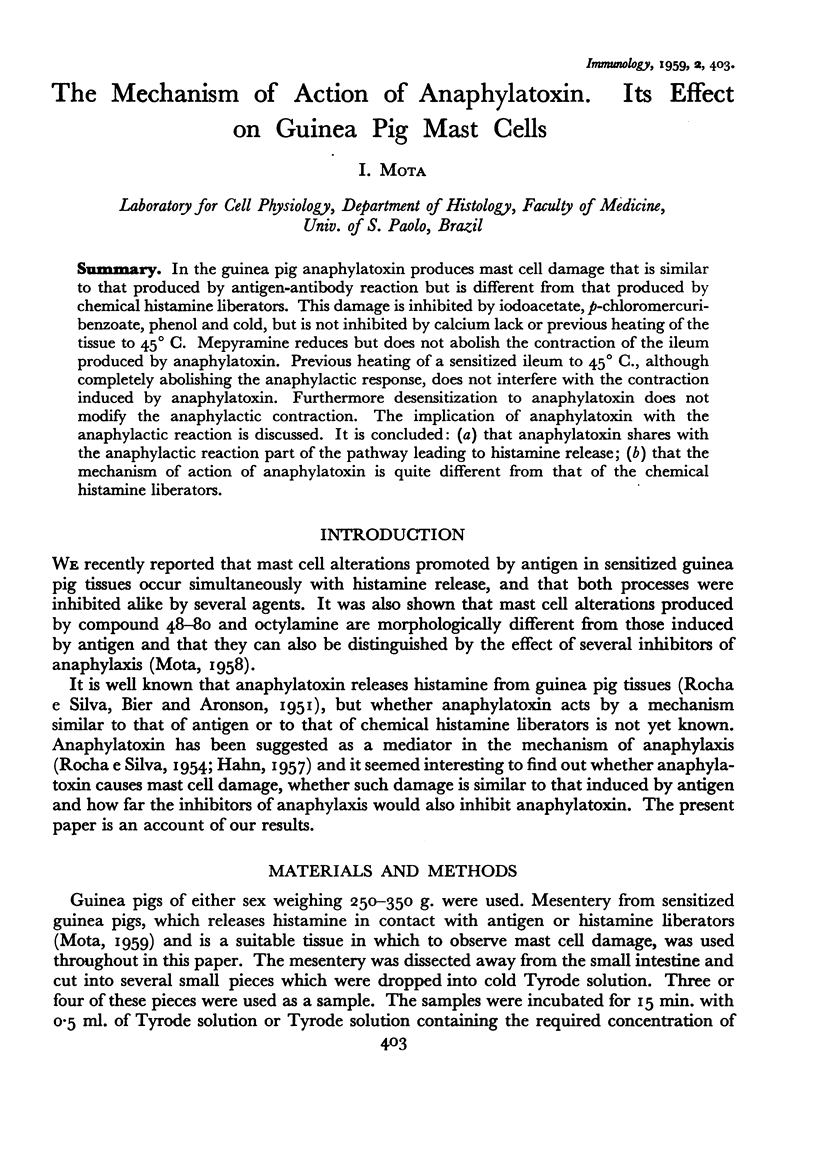
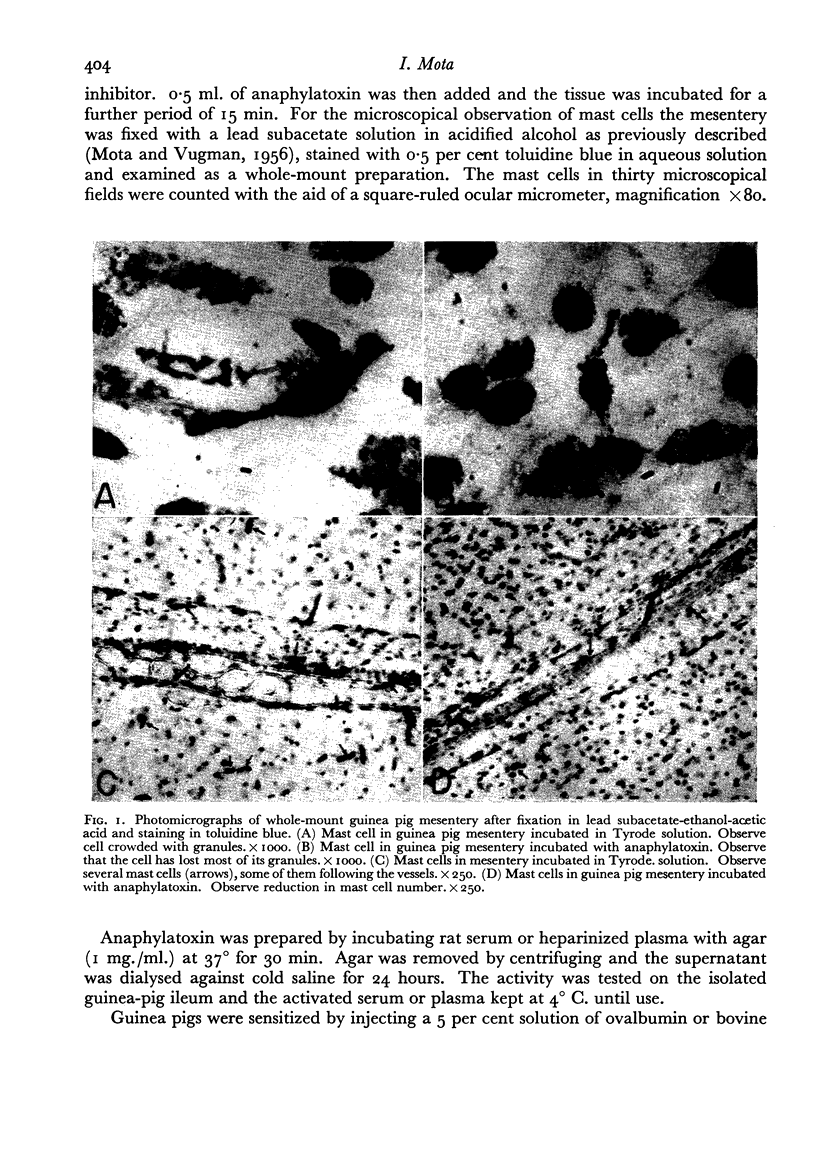
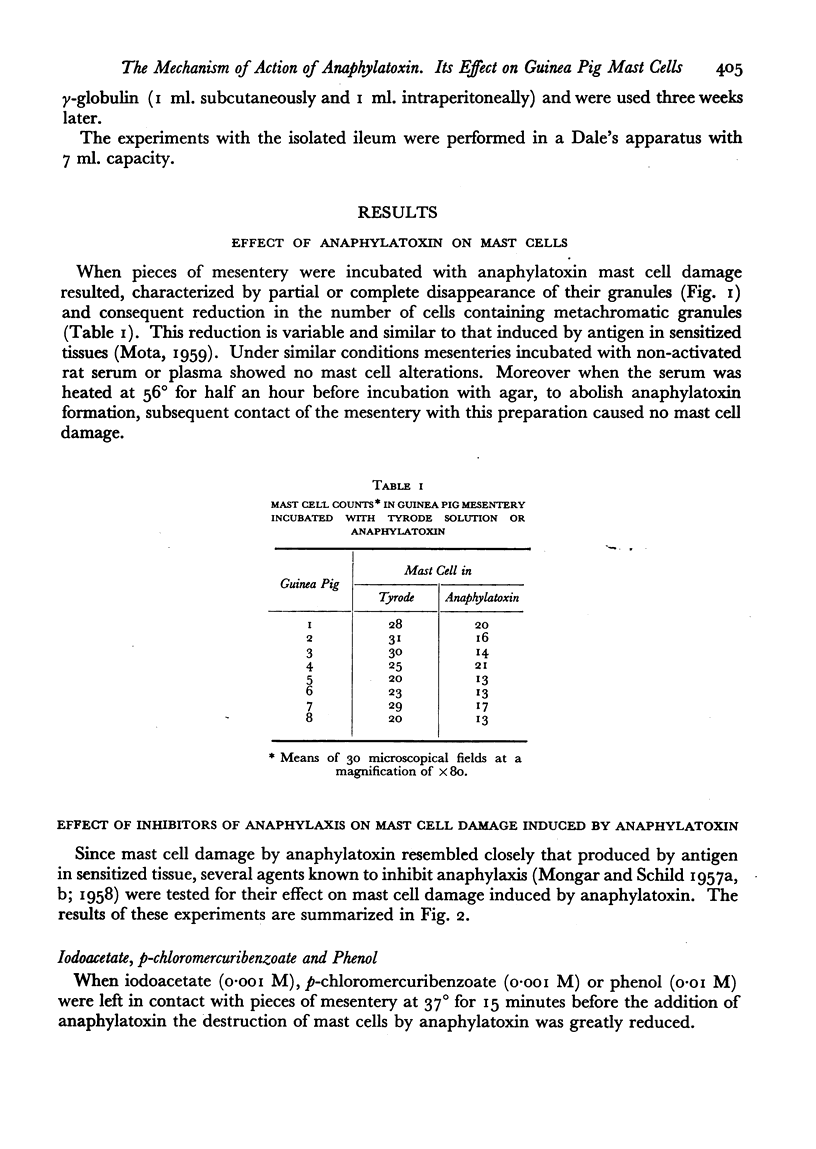
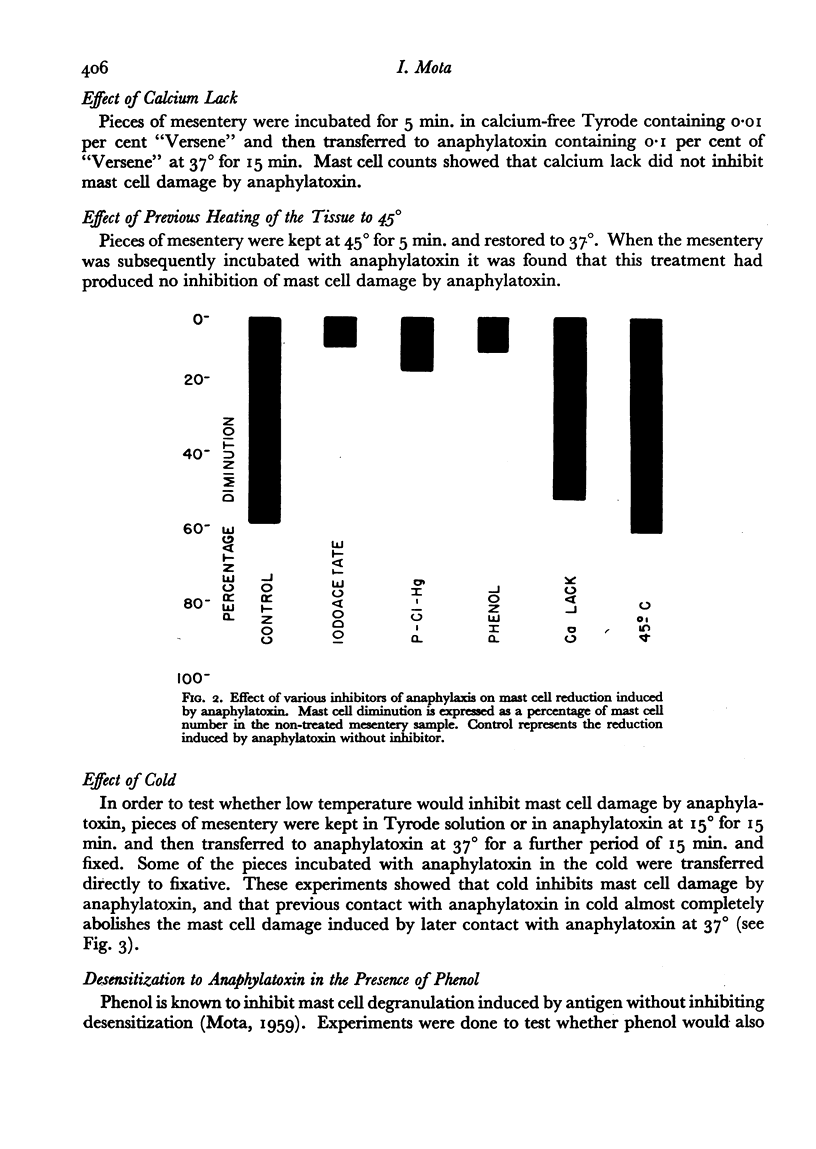
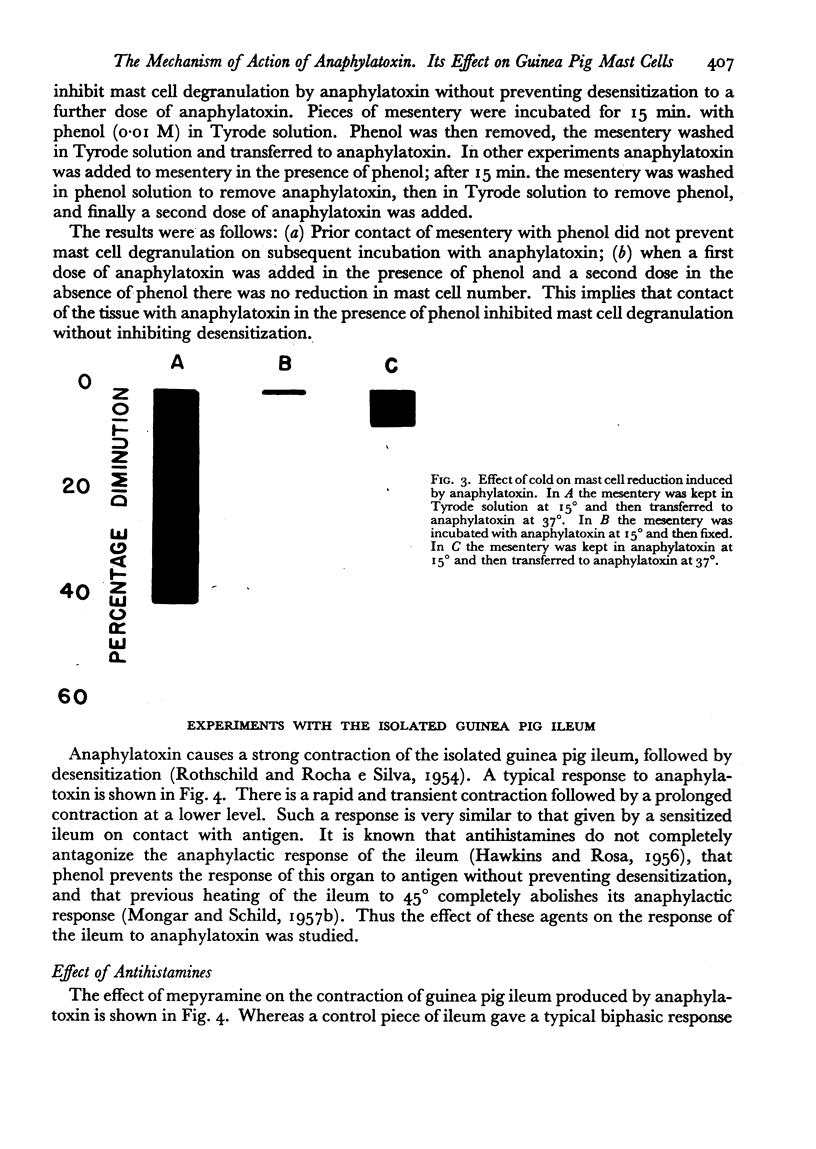
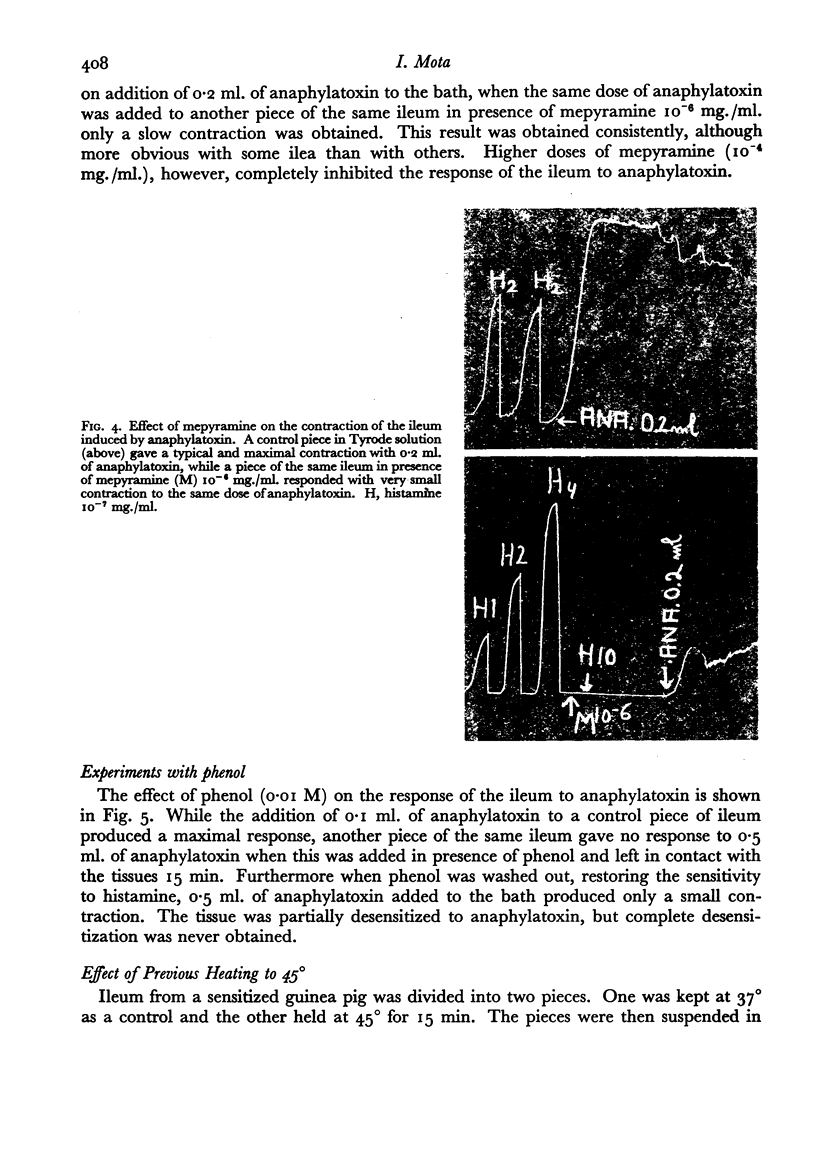
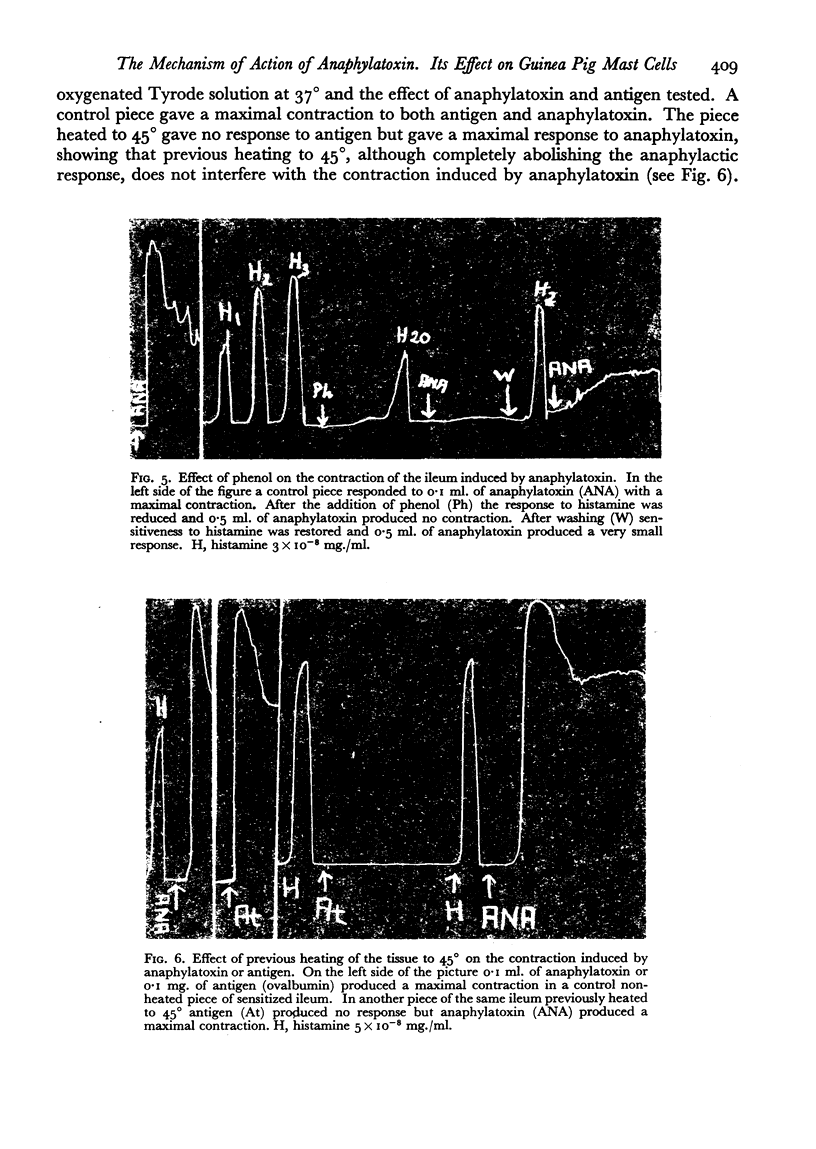
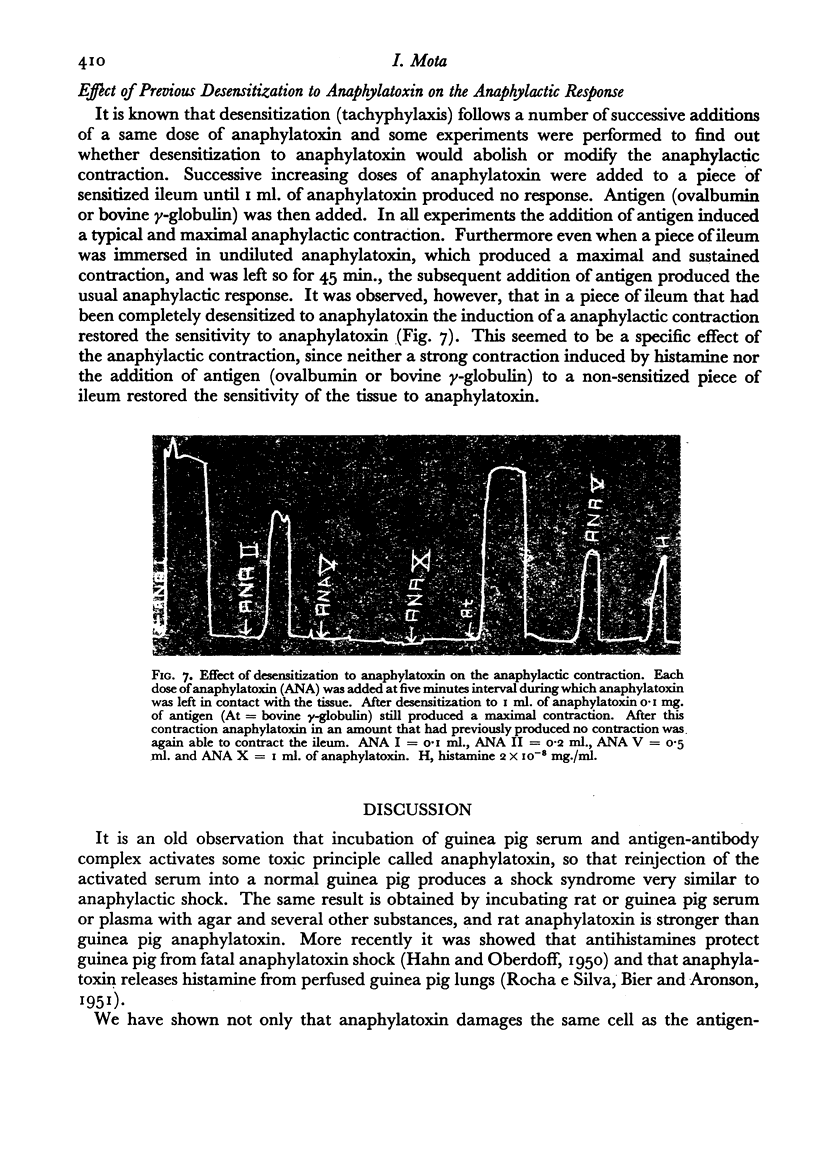
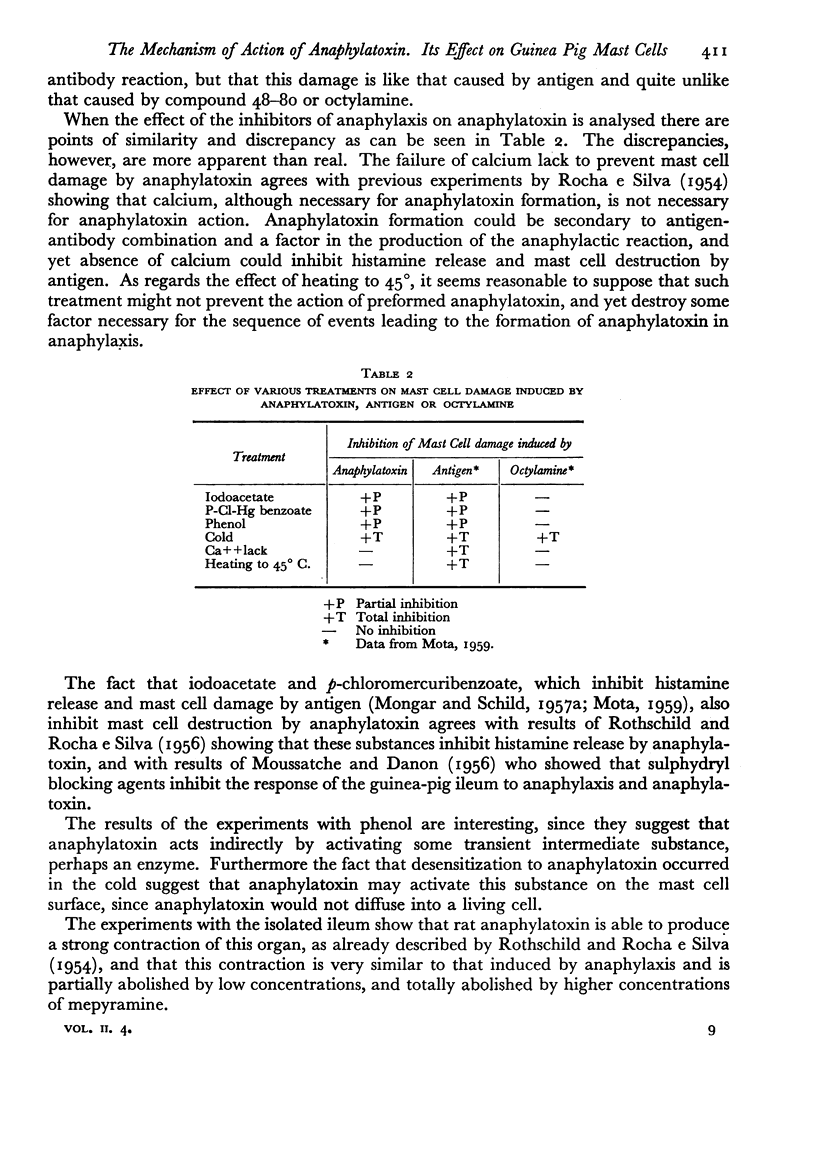
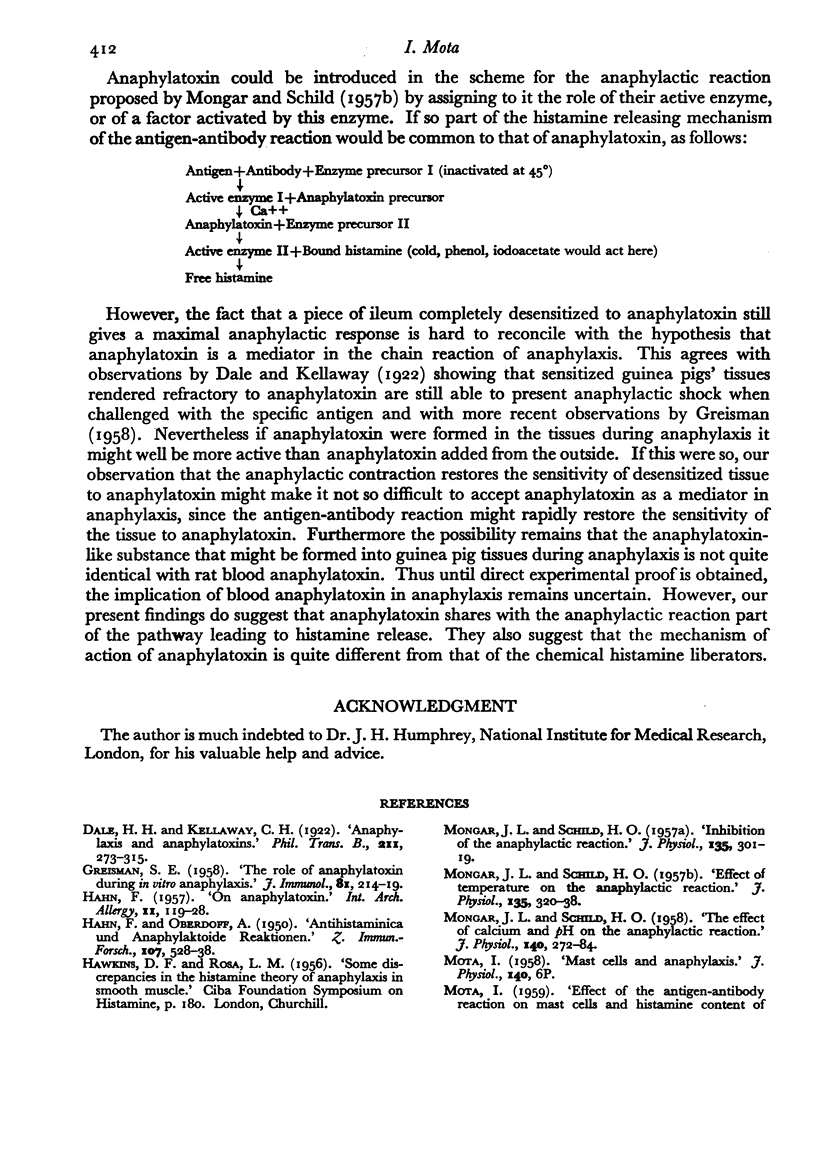
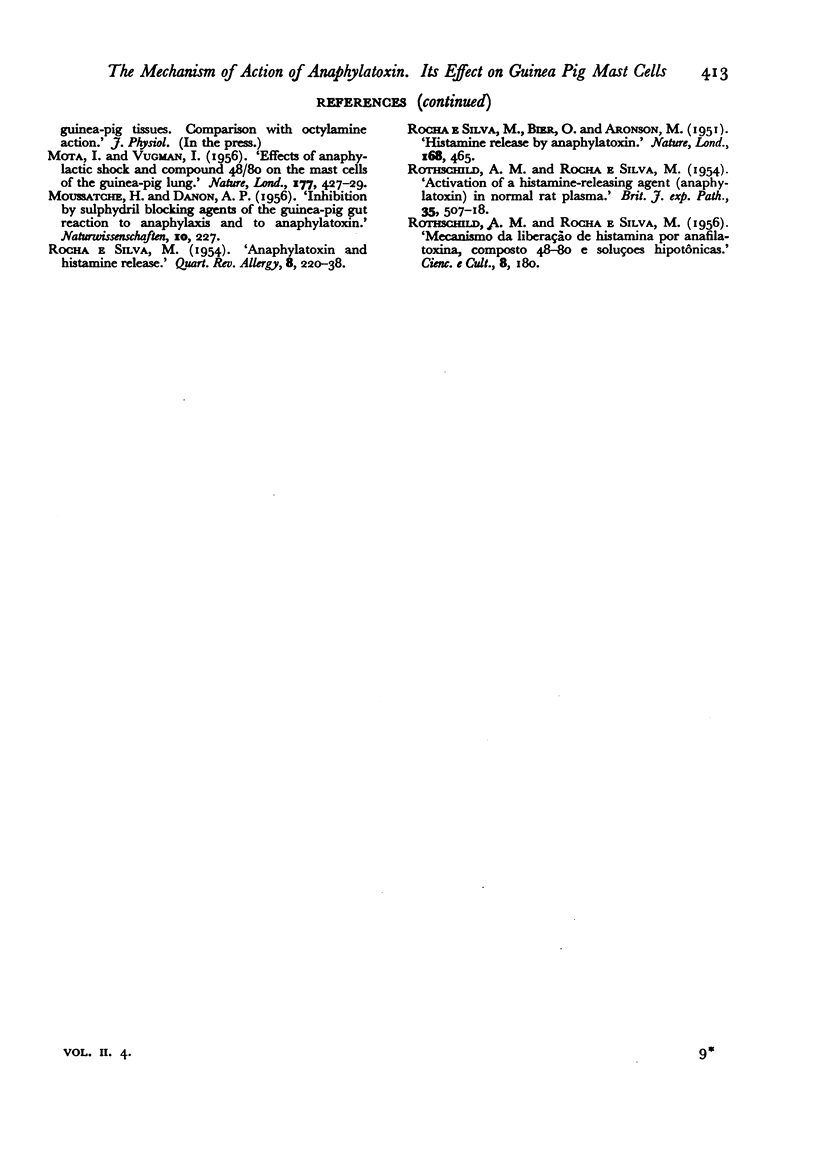
Images in this article
Selected References
These references are in PubMed. This may not be the complete list of references from this article.
- ROCHA E SILVA M. Anaphylatoxin and histamine release. Q Rev Allergy Appl Immunol. 1954 Jun;8(2):220–238. [PubMed] [Google Scholar]
- ROTHSCHILD A. M., ROCHA E SILVA M. Activation of a histamine-releasing agent (anaphylatoxin) in normal rat plasma. Br J Exp Pathol. 1954 Oct;35(5):507–518. [PMC free article] [PubMed] [Google Scholar]



